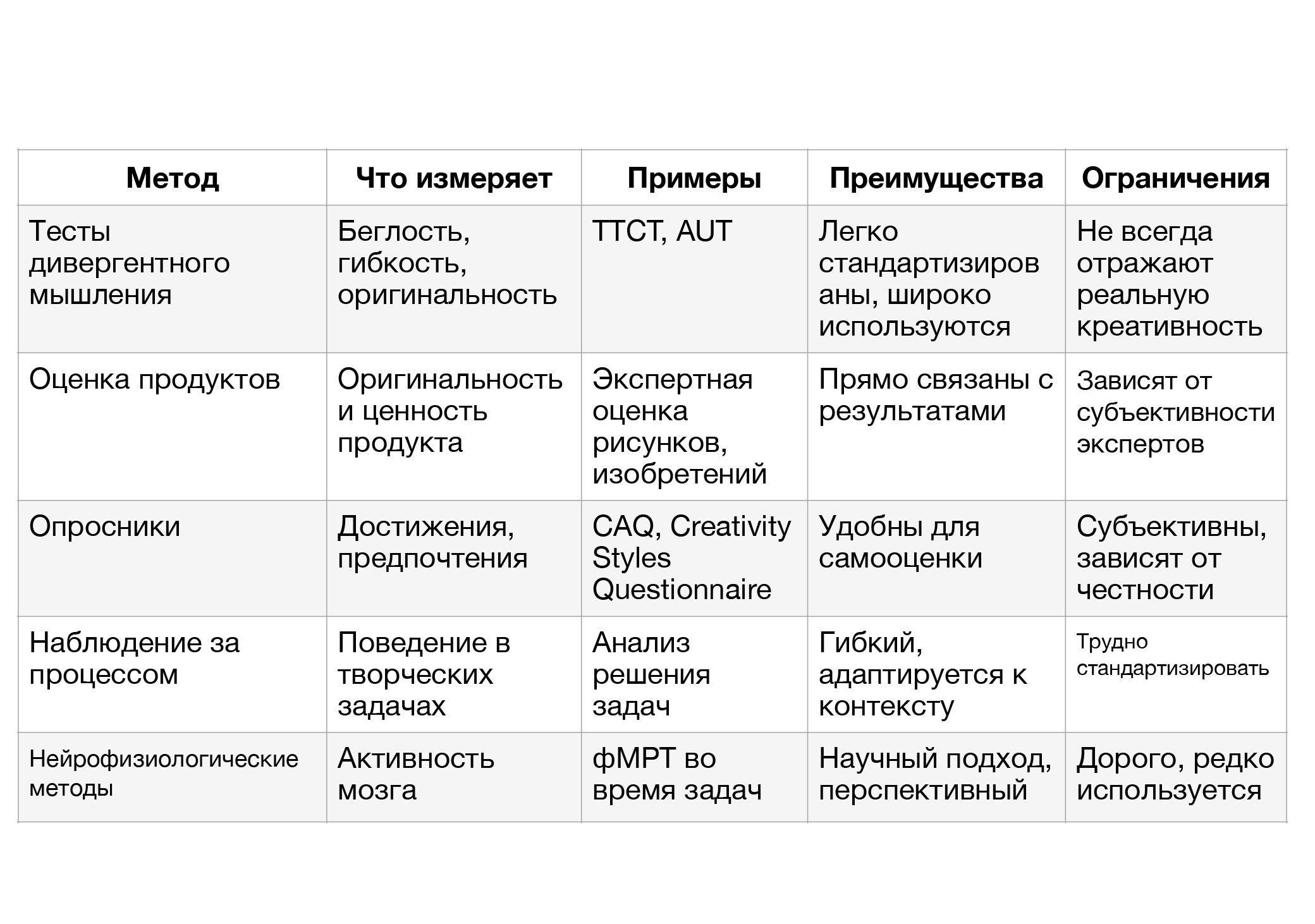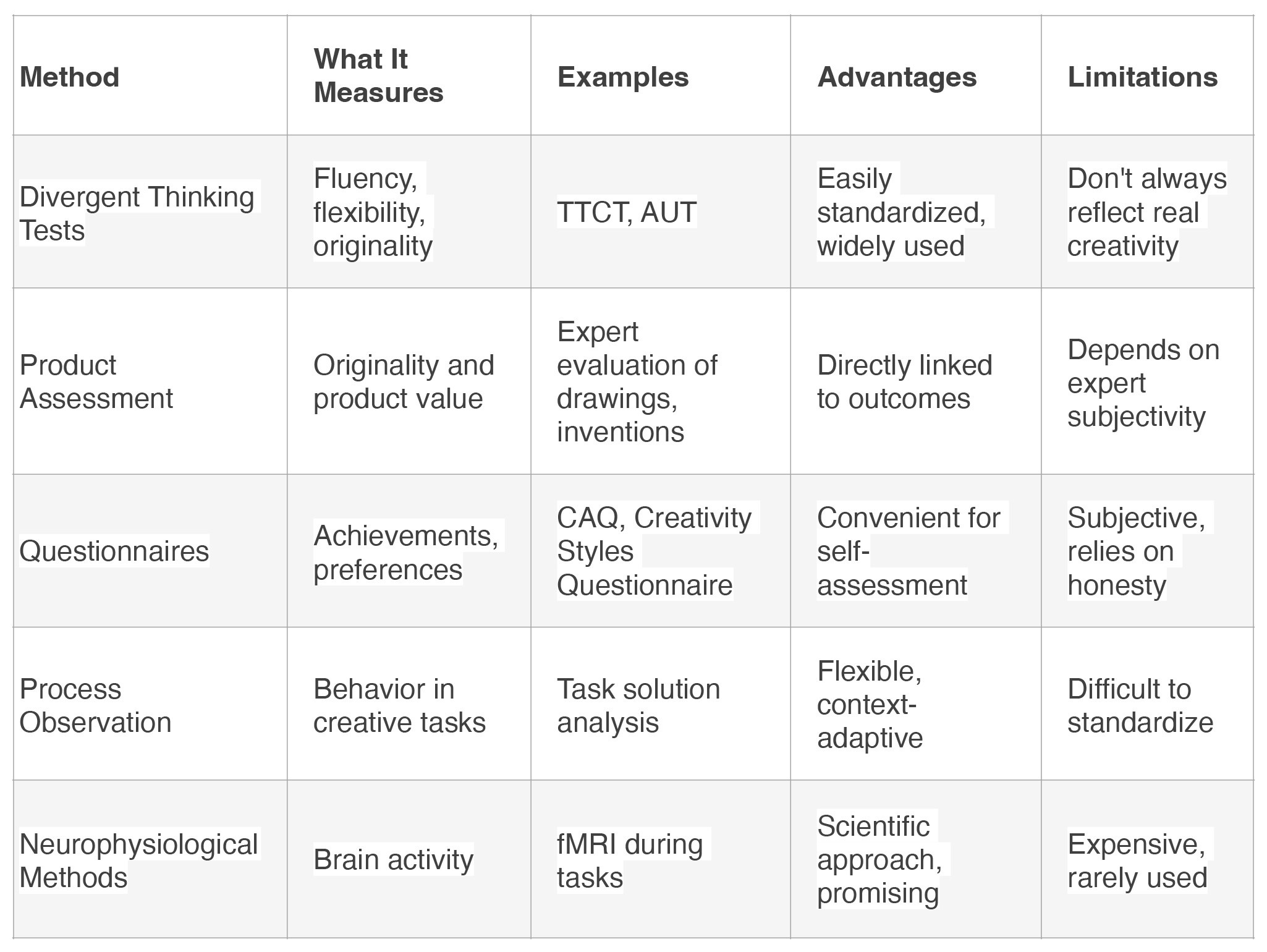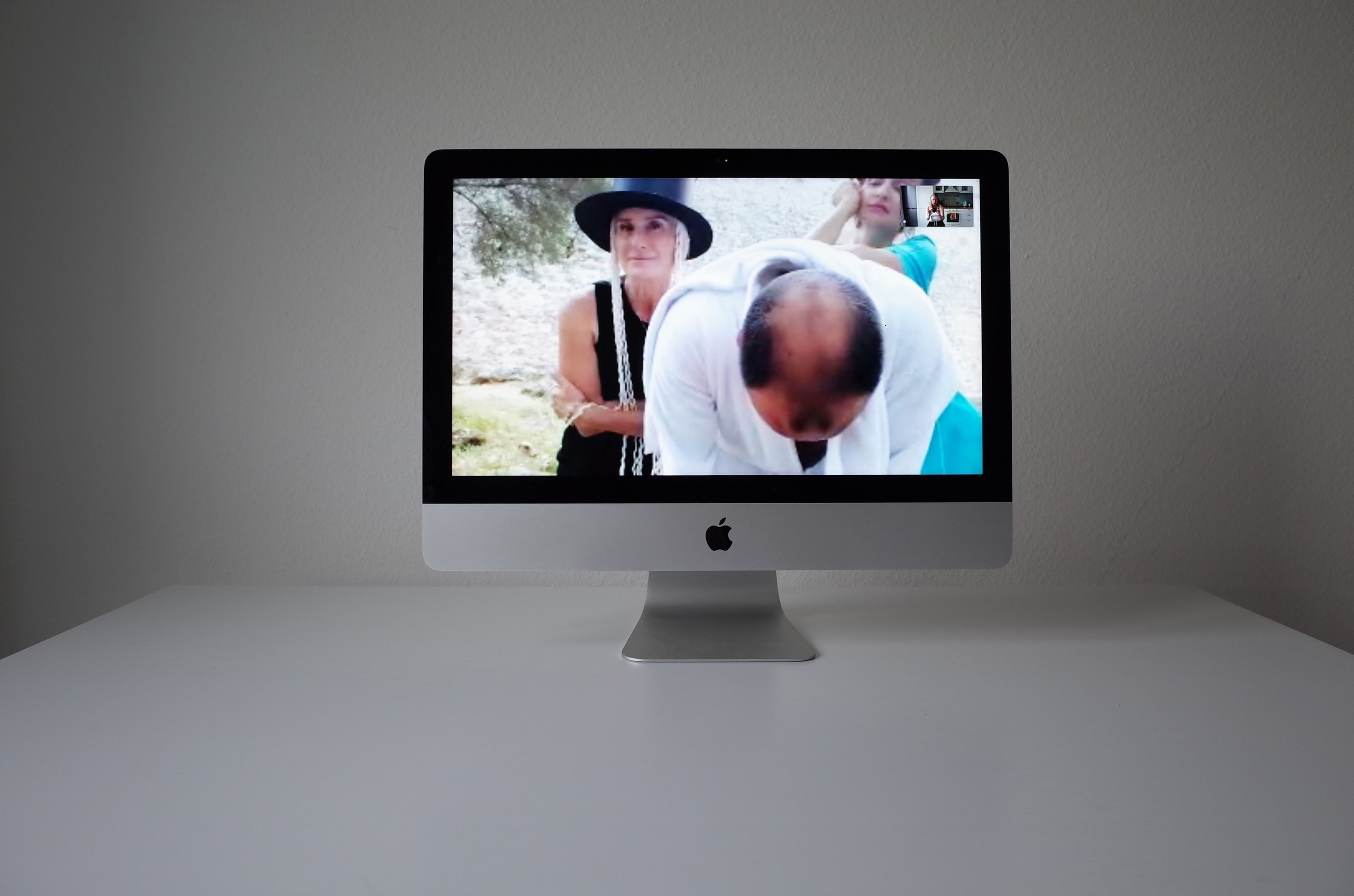Fish from a bag — or a return to yourself
In this video, a 3‑year‑old student creates a fish out of… an ordinary transparent plastic bag. And this isn’t just a craft—it’s an exercise in seeing. We’re not teaching “drawing by example, ” but learning to look at the world from a different angle. This very skill is the foundation of any creativity—in art, in life, and in problem‑solving.
Что такое креативность и как ее измерить?
What is Creativity and How Can It Be Measured? Categories of Creativity
Research, such as the article on MDPI’s blog, distinguishes two levels of creativity:
1. Big-C Creativity:
- Definition: Groundbreaking, revolutionary achievements (e.g., Darwin’s theory of evolution, Renaissance masterpieces).
- Scope: Transformative contributions that redefine entire fields.
2. Little-c Creativity:
- Definition: Everyday creative acts (e.g., solving household problems, self-expression through hobbies).
- Scope: Small-scale but essential for personal and social adaptation.
Both levels are important, and measurement methods vary depending on which aspect is being analyzed.
Methods for Measuring Creativity
Measuring creativity is complex, and as noted in an Artsy article, it faces challenges due to subjectivity and diverse approaches. Below are key methods based on literature analysis:
1. Divergent Thinking Tests
Assess the ability to generate multiple ideas, a core aspect of creativity. Examples:
-
Torrance Tests of Creative Thinking (TTCT): Developed by E. Paul Torrance, measures:
- Fluency (number of ideas)
- Flexibility (diversity of ideas)
- Originality (uniqueness)
- Elaboration (detail)
- Example task: “List as many uses for a plastic bag as possible.” (Idea to Value)
- Guilford’s Alternative Uses Test (AUT): Participants generate unconventional uses for everyday objects (e.g., a brick) within a time limit. Evaluates fluency, flexibility, and originality.
Limitations: As noted on Quenza, these tests may lack real-world applicability, with children often finding them repetitive.
2. Creative Product Assessment
Experts evaluate tangible outputs (e.g., artwork, inventions).
- Example: A child’s sculpture made from a plastic bag could be rated for originality and aesthetic value.
- Limitations: Subjective and costly (ResearchGate). A 1991 study found mass-produced art sometimes scored equally to museum pieces in creativity assessments.
3. Self-Report Questionnaires
Tools like the Creative Achievement Questionnaire (CAQ) and Creativity Styles Questionnaire-Revised assess self-perceived creative tendencies.
- Pros: Useful for tracking personal achievements.
- Cons: Subjective and prone to bias (PsychReg).
4. Process Observation
Analyzes behavior during creative tasks (e.g., flexibility, problem-solving).
- Example: Observing how a child repurposes materials.
- Use: Common in educational/clinical settings but hard to standardize.
5. Neurophysiological Methods
- fMRI studies (e.g., PMC/NIH) map brain activity during creative tasks.
- Status: Experimental; rarely applied practically.
6. Organizational Creativity Metrics
Businesses combine:
- Subjective evaluations (expert panels)
- Objective metrics (innovation output, revenue)
- Example: Balanced Scorecard frameworks (Balanced Scorecard Institute).
Challenges in Measurement
Per Taylor & Francis:
- Subjectivity: Originality judgments vary culturally.
- Context-dependence: Creativity differs across domains (art vs. engineering).
-
Dynamic nature: Influenced by mood, environment, and experience.
A 2016 review of 152 studies (ResearchGate) found no unified measurement framework, highlighting the need for further research.
Critique:
Dr. Mark Bate, organizational psychology lecturer, termed creativity measurement a “degenerating research program” due to persistent methodological disagreements.
Modern Tools (2025 Outlook)
Per Quenza:
- TTCT (verbal/figurative creativity)
- AUT (divergent thinking)
- Remote Associates Test (RAT) (convergent thinking)
- CAQ (real-world creative achievements)
- Creativity Styles Questionnaire-Revised (process preferences)
Future Trends:
- AI-enhanced assessments
- Neuroscientific approaches
- Cross-cultural frameworks
- Longitudinal studies
Comparison of Creativity Measurement Methods
The table below provides a systematic comparison of major approaches to assessing creativity, highlighting their key characteristics, applications, and limitations


Why Copying Trends Doesn’t Develop Creativity (And Why It’s Not Real Art)
Copying trends seems safe. Everyone does it. It “works.”
But here’s the catch:
🔄 Trends Are a Loop of Repetition
You’re just recreating someone else’s path—not thinking, not risking, not exploring. That means you’re not growing.
🧠 Creative Thinking Doesn’t Live in the Comfort Zone
It starts where you:
- Ask uncomfortable questions
- Try new things
- Make mistakes
- Find your own way
📉 Following Trends Kills Your Unique Style
You become part of the visual noise. Impossible to stand out among hundreds of others.
🚫 Imitation ≠ Growth
To evolve, you shouldn’t just copy what’s successful, but ask:
- Why did this work?
- What can I say differently?
- Why am I even creating?
💡 Creativity Is a Muscle
It grows through experimentation, not tracing.
Why Are Children So Creative?
Kids and Creativity
Let yourself “play"—mix, experiment, make mistakes.
1. Their Thinking Is Design-Based, Not Engineering-Based
Children thrive on divergent thinking—the ability to rapidly generate multiple ideas without an inner critic.
Imagine: Give a child a box, and they see a spaceship, a house, a car…
An adult immediately thinks: “Why? Who needs this?”
2. Imagination at Full Power
Kids actively use fantasy and role-play (make-believe), where objects transform into anything—a magic wand, a phone, an animal’s home. This is natural training for creative thinking.
3. They’re Free From Fear of Mistakes
For children, mistakes are just part of the process. They naturally ask “What if…?” and take risks. They try, break, and rebuild—while adults overthink and self-doubt.
4. Freedom Through Play
Play is a learning environment where kids:
- Explore the world
- Repeat mistakes safely
- Process emotions
- Strengthen neural connections
It’s where creativity flourishes and associative, abstract thinking develops.
What About Adults?
We lose our imagination over time. Why?
📦 Income.
📦 Daily chores.
📦 “Proven solutions.”
📦 “This is the right way.”
📦 “This is how my parents did it.”
We increasingly act:
- Using someone else’s template.
- Following instructions.
- Sticking to the script.
And one day, we stop hearing ourselves.
We stop dreaming.
🧠 Why Routine and Stress Kill Observation, Imagination, and Energy
1. The Brain Switches to Survival Mode
When stressed, anxious, or exhausted, the limbic system (the ancient “fight/flight/freeze” part of the brain) takes over.
- It doesn’t dream.
- Its job is safety, not inspiration.
🎯 Result: You miss nuances, overlook details, and stop fantasizing—because all mental resources go to basic functioning.
2. Daily Life Splinters Your Attention
Bills, cleaning, calls, logistics, work—these demand external control, not internal reflection.
You live like a dispatcher, not an artist.
🎯 Result: Your observational skills decline because your focus stays in “obligation mode”, not “curiosity mode.”
3. No “Playground” for the Mind
Imagination thrives in goalless space.
But adult life is all goals: do this, finish that, pay those.
✖️ When you deny yourself the right to be “useless, ” you cut off oxygen to creativity.
4. Energy = Fuel for Choice
Every decision drains energy.
When exhausted, the brain minimizes choices to conserve resources (behavioral patterns).
🎯 Result: You think, “I have no options, ” when in truth—you lack the energy to see them.
5. The Mind Shrinks Like a Rain-Soaked Leaf
Too much overwhelm? The psyche conserves energy.
You become less alive, not from laziness, but self-protection.
Like a wound forming a scab, the mind shuts down from overstimulation.
💡 What Can You Do About It? (Gentle, Step-by-Step)
Small Shifts to Reawaken Creativity:
- Mini observation breaks: 5 minutes looking out the window (no phone).
- One daily question: “What did I miss today?”
- Reconnect with your body: Walk, breathe, stretch—restores energy.
- Aimless creative rituals: Draw, write, daydream—just for fun.
- Schedule “useless time”: At least 20 minutes a week with no agenda.
- Release productivity pressure: You don’t always need to “achieve.”
📌 Key Reminder:
Burnout doesn’t make you flawed—it just temporarily mutes your ability to see beauty and possibility.
That ability isn’t gone. It’s waiting for you to come alive again.
Flow States & Creativity
Flow — When You Disappear and the Work Happens on Its Own
No more “What if I fail?” No more “How should I do this?”
You are fully immersed in the action, and that’s the true magic of creativity.
💡 What Is Flow?
A psychological concept developed by Mihaly Csikszentmihalyi and later explored by Steven Kotler.
It’s a state of peak focus, enjoyment, and productivity, where time dissolves and effort feels effortless.
🔑 How to Enter Flow State
1. Pick a Slightly Challenging Task
- Not too easy (boring)
- Not too hard (anxiety-inducing)
- Just beyond your comfort zone
2. Eliminate Distractions
- Phone on airplane mode
- One project, one hour
- No multitasking
3. Set a Clear Goal
- Not “Do something creative”
- But: “Write 10 exhibition title ideas”
4. Track Time… Then Forget It
- Set a timer, but allow yourself to get lost
- Flow exists outside of time
5. Move Your Body (Even for 5 Minutes)
- Physical activity (or dancing) primes your brain for creativity
🔥 Flow Isn’t Inspiration — It’s Discipline + Ritual
You don’t wait for it—you train it.
The more you practice, the deeper it gets.

Professions Where Creative Thinking Is Essential (Not Just a Bonus)
Creative thinking isn’t just for artists, writers, and designers. In today’s world, it’s a crucial skill demanded across many fields—especially in times of instability, digital transformation, and intense competition.
🎨 Artistic & Creative Professions
- Artist / Illustrator
- Graphic Designer / Motion Designer
- Photographer / Retoucher
- Architect / Urban Planner
- Fashion Designer
- Interior Designer
- Art Director
- Set Designer / Costume Artist
- Musician / Composer
- Film Director / Screenwriter / Producer
🧠 Strategic & Intellectual Professions
- Marketer / Brand Strategist
- Copywriter / Content Creator
- UX/UI Designer
- Creative Director
- PR Specialist
- Psychologist / Art Therapist (Creative problem-solving for clients)
- Business Analyst (Innovation in product development)
- Entrepreneur / Startup Founder
- Innovation Specialist / Futurist
- Creative Thinking Coach / Educator
🔬 Science & Engineering (Yes, Really!)
- Design Engineer / Robotics Engineer
- Physicist / Researcher (Especially in theoretical fields)
- Software Developer / Data Scientist (Creative algorithms & solutions)
- Bioengineer / Geneticist
- Chemist / Pharmaceutical Researcher (Drug development)
💡 Unexpected but Critical
- Lawyer (Copyright, international law, creative industries)
- Political Strategist / Diplomat (Negotiation tactics & policy design)
- HR Manager / Corporate Culture Leader
- Educator / Curriculum Developer
- Journalist / Reporter / Podcaster
"The future belongs to hybrids—engineers who think like poets, doctors who design like artists."
One-on-One Course: “But I Calculate the Old-School Way”
Now open for enrollment!
A creative thinking bootcamp for adults who want to break free from rigid patterns.
⏳ 10 hours | 10 weeks
🧠 67 unconventional challenges
💡 Trains imagination + mental flexibility
“For those tired of thinking inside the box.”
Course Highlights
- Unlearn formulaic thinking through:
- Lateral math problems
- Visual-spatial puzzles
- Real-world “what if” scenarios
- Lateral math problems
- Visual-spatial puzzles
- Real-world “what if” scenarios
- Personalized coaching: Adapts to your cognitive blind spots
- Pre-AI thinking skills: Strengthen human creativity before machines take over
Who It’s For:
✔ Professionals needing fresh problem-solving tools
✔ Artists/designers battling creative blocks
✔ Anyone who mutters “There’s got to be another way…”
Early-bird bonus: First 5 sign-ups get a “Mental Gymnastics” workbook.








